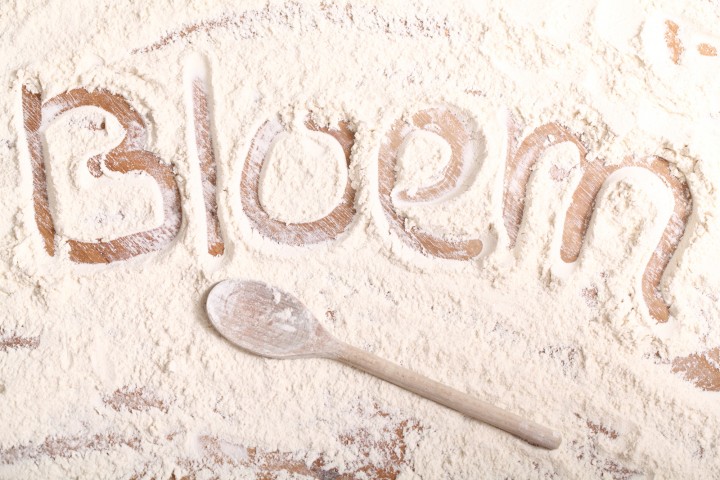
Flour quality and type are the essence of good bread. It all begins with buying the right kind for your recipe!
Getting good quality flour is the easiest way to improve the way your bread will look and taste. Flour from supermarkets tends to be very white, often old, lacking in taste and natural enzymes, and, most important, not very useful for bread baking (at least over here in Holland).
We get our flour from a windmill, which gets its wheat from the center of The Netherlands. They then grind it on big stones, powered by wind. The flour has an EKO (organic) seal of approval, a very nice yellowish hue from the natural carotene and it tastes of fresh grass and wheat berries. The flour is so fresh we have to ‘store’ it for 2 weeks to improve the baking properties and water absorption ability.
We are very lucky to have found great bread flour so close to home. How much difference it makes is also shown in our flour experiment for which we baked the same loaf with both high quality flour from a mill and cheap supermarket flour.
This flour overview teaches you more about flour types and how they are referred to in different countries. It can help you buy the right type of flour, no matter what country you bake in.
| Ash | Protein | US | German | French | Italian | Netherlands |
|---|---|---|---|---|---|---|
| ~ 0.4% | ~ 9% | pastry flour | 405 | 45 | 00 | zeeuwse bloem |
| ~ 0.55% | ~ 11% | all-purpose flour | 550 | 55 | 0 | patentbloem |
| ~ 0.8% | ~ 14% | high gluten flour | 812 | 80 | 1 | tarwebloem |
| ~ 1% | ~ 15% | first clear flour | 1050 | 110 | 2 | gebuilde bloem |
| > 1.5% | ~ 13% | whole wheat flour | 1700 | 150 | Farina integrale | volkorenmeel |
Ash content explained
To establish the ash content of flour a fixed amount of the flour is burned and what is left after this process is the ‘ash’. The amount that is left is expressed as a percentage of the original fixed amount. The ash consist of minerals that are left after burning, so they do not combust.
It is a way of determining the quality / purity of the flour. A higher ash content indicates that the flour contains more of the germ, bran, and outer endosperm. Lower ash content indicates that the flour is more refined. As you can see in the table above, the whole wheat flour has the highest ash content.
German flour type numbers (Mehltypen) indicate the amount of ash (unburned mineral content, measured in milligrams) obtained from 100 g of the dry mass of this flour. Standard wheat flours range from type 405 for normal white wheat flour for baking, to strong bread flour types 550, 812, and the darker types 1050 and 1700 for wholegrain breads. There is also a type 1600 which fits between white wheat flour and whole wheat flour, it will give you a darker white bread.
French flour type numbers indicate the ash content (in milligrams) per 10 g flour. The numbers are a factor 10 lower than the German types. Type 55 is the standard, hard-wheat white flour for baking, including puff pastries (“pâte feuilletée”). Type 45 is often called pastry flour, and is generally from a softer wheat (this corresponds to what older French texts call “farine de gruau”). Some recipes use Type 45 for croissants although many French bakers use Type 55 or a combination of Types 45 and 55. Types 65, 80, and 110 are strong bread flours of increasing darkness, and type 150 is a wholemeal flour. Note that there is no type 40 French flour like the German type 405, the closest is type 45.
In the United States and the United Kingdom, no numbered standardized flour types are defined, and the ash mass is only rarely given on the label by flour manufacturers. However, the legally required standard nutrition label specifies the protein content of the flour, which is also a way for comparing the extraction rates of different available flour types.
British flour types for bread baking:
Stoneground strong wholemeal* 100% extraction rate* – 12-14% protein
Stoneground wholemeal 95% extraction rate – 12-14% protein
Strong white extraction rate 72-75% – 12 to 13% protein
Extra strong white extraction rate 72-75% – 14 to 15% protein
Plain white 72-75% extraction rate – 9 to 11% protein (can be use to replace Italian 00 flour for example, but less suitable for most bread baking and most often used for cakes and cookies / biscuits)
Brown 80% extraction rate – 12-14% protein
*Extraction rate: The amount of original grain left in the flour. These extraction rates are not often mentioned on the bags. To make white flour you sift out germ and bran. If you sift out all the germ and bran it’s about 28% and you end up with 72% extraction flour.
*We often use the term wholewheat (like in America) but it means the same as the UK term wholemeal, but wholemeal can also refer to other grains like wholemeal spelt flour. In Holland we call this ‘volkoren’.
In the Netherlands it is even harder to establish the protein content and ash mass as most bags simply state ‘Tarwebloem’ or ‘Patentbloem’. As a general rule all flour, both ‘Tarwebloem’ and ‘Patentbloem’, you can buy in supermarkets have a low protein content and will not bake great bread. We have found out, by baking and experimenting a lot, that most ‘Tarwebloem’ flours sold by windmills in The Netherlands work well for baking artisan breads.
Soft wheat with lower protein content and less gluten is used for pastry. Hard wheat with higher protein content and more gluten is used for bread.
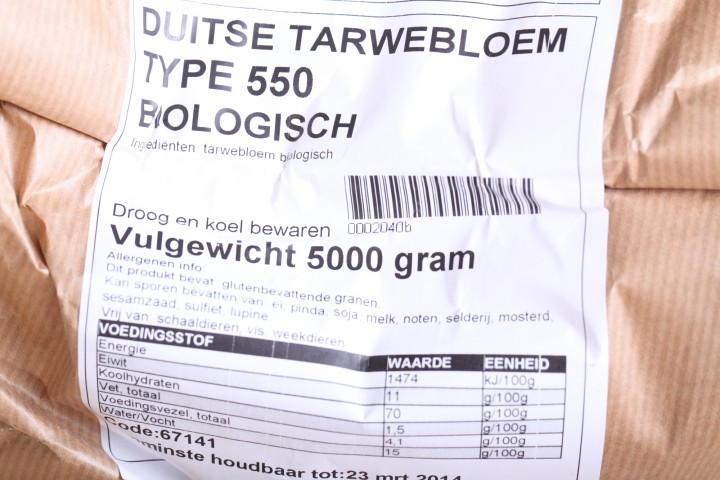
In general, as the extraction rate of the flour increases, so do both the protein and the ash content. However, as the extraction rate approaches 100% (whole meal), the protein content drops slightly, while the ash content continues to rise. Apart from the extraction rate itself the wheat can be of the soft or hard type. Hard wheat (usually hard spring wheat) has a higher gluten content (between 11% and 13%) and is excellent for baking bread. Soft wheat has a lower gluten content (between 9% and 11%) and is often used in all purpose flour and pastry flour which gives a more crumbly texture. Soft flour is usually divided into cake flour, which is the lowest in gluten, and pastry flour, which has slightly more gluten than cake flour. To make things even more complex, you can make whole wheat flour from soft wheat and patent flour from hard wheat and vice versa.
The English word for “flour” is originally a variant of the word “flower”. Both derive from the Old French fleur or flour, which had the literal meaning “blossom,” and a figurative meaning “the finest.” The phrase “fleur de farine” meant “the finest part of the meal,” since flour resulted from the elimination of coarse and unwanted matter from the grain during milling.
‘Dutch’ flour glossary
| Flour | Description |
|---|---|
| 00 bloem | Very fine Italian flour made of hard- or soft wheat. |
| Amerikaanse patent | A high protein content wheat flour, so very high in gluten. Found in Dutch bakeries under the name ‘lely’. |
| Bread flour | Usually to indicate a high protein content wheat flour (around 13%), so very high in gluten. |
| Durum | Triticum Durum, a wheat type with high protein content growing in warm areas. The germ has a yellow hue. Often used for Italian pasta. |
| Franse bloem | Very fine flour of only the germ and the endosperm. Often used for French baguettes. |
| Gebuilde bloem | Fine flour with only a part of the bran (usually has an extraction of 80% and 85%). |
| Grano Tenero | Soft wheat, low in gluten. Available in different extractions. |
| Grano Duro | Hard wheat, high in gluten. Available in different extractions. |
| Griesmeel | Coarse ground grains, for example wheat, spelt, corn or rice. |
| Kiem | Germ, the seed for a new plant, contains B vitamins, some protein, minerals and healthy oils. |
| Manitoba | A Canadian high protein content wheat flour, so very high in gluten. |
| Meellichaam / Meelkern | Endosperm, contains starch, protein, some vitamins and minerals. This is the food source for the germ to grow into a new plant. |
| Patentbloem | Very fine wheat flour without germ and bran. There is a big difference in quality between brands. |
| Patisserie bloem | Zeeuwse bloem or pastry flour. Very finy white flour with a low gluten content. |
| Semolina | Coarse ground grains, often from durum wheat. |
| Semolina rimacinata | Fine ground grains, often from durum wheat. |
| Tarwebloem | Fine ground wheat. Whiteness is between ‘patentbloem’ and ‘tarwemeel’. |
| Tarwemeel | A blend of ½ bread flour, ½ whole wheat, used in ‘tarwebrood’. |
| Volkorenmeel | The coarse ground complete wheat grain, contains the whole kernel, used for ‘volkorenbrood’. |
| Zachte bloem | Triticum Sativum, soft wheat flour with low to medium protein / gluten content. |
| Zeeuwse bloem | Fine flour with low gluten content, used for cookies and pastry. |
| Zemel | Bran, protective outer shell. High in fiber and B vitamins. |



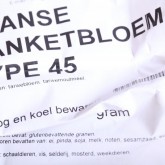
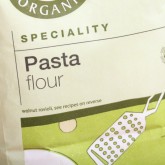
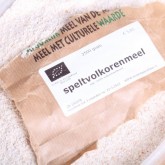
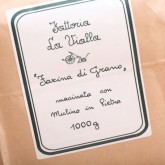
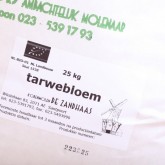
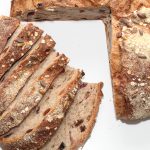

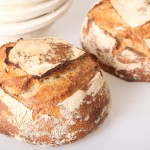
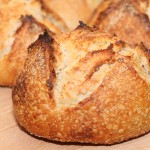
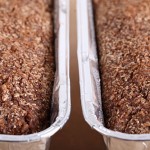

JG says
There is a mistake in the glossary. “Grano duro” refers to flour made with durum wheat or Triticum durum. This refers to the resistance of the grain to milling, in particular of the starchy endosperm, implying dough made from its flour is weak or “soft”. This makes durum favorable for semolina and pasta and less practical for flour, which requires more work than with hexaploid wheats like common bread wheats. Despite its high protein content, durum is not a strong wheat in the sense of giving strength to dough through the formation of a gluten network
Karen says
Dear Sir / Madam
My self Karen, I want to buy all purpose wheat flour for bakery used , I found the Netherlands supplier I want buy products made in Netherlands.
I saw your email address by thrue internet.
Please advise me for your good response.
Thanks & regards
Karen
Alan Jardine says
Hi,
Wonderful information! Very interesting indeed. You certainly know your flour!
A question please? I am an Englishman living in Slovakia. Here, they have a fantastic dish called Langose (sometimes called Osuch). It is made by mixing the flour and yeast, then deep frying it (similar to doughnuts). This gloriously light, fluffy type pancake is then filled with brynza (cheese), Kysla (sour cream) and garlic.
It is truly divine when the bakery chef knows what he’s doing. But these chefs are very secretive about their recipes!!!! One well known Slovak chef once told me: Alan, the secret is in the flour, only the very finest can be used.
Could you give me an indication of what type of flour this would be please?
Best regards,
Alan Jardine
Alexis says
Hi! I’ve been using patentbloem from Jumbo to make bread as it has more percentage of protein per 100g serving according to the nutrition label, I think it says 13g protein per 100g. So would this flour be a 13% protein content? If so, that’s decent for bread right ? Or is the info on the label not exactly what is used to figure it out…thanks, I’m confused haha!
Robin says
Hello,
I’m Swede living in the Netherlands and love to bake. I’ve tried to understand the difference between Tarwebloem and Patentbloem but keep finding conflicting information. In the comparison table above you list patentbloem as all purpose flour, and tarwebloem as the high protein flower, this is the reverse of what I’ve found on other sites, for example here:
broodsmakelijk.nl/versc…atentbloem
and here
uitpaulineskeuken.nl/recep…l-en-bloem
so now I’m more confused than ever.
Met Vriendelijke Groet,
Robin
janne says
My recipe for bread (Ed of Better Homes and Garden TV show asks for 400 gms bakers’ flour, 70% water, 2% salt and small pack yeast. This does not make my bread making easy! I have enough trouble getting right with an ordinary hand bread recipe. Please explain the actual measurements and time for cooking.
Jeroen says
Dank voor deze uitleg. Ik heb een Engelstalig bagel recept uit Canada en daar wordt gevraagd om “bread flour” en tevens “non-diastatic malt powder/extract”.
Welke bloemsoort kan ik het beste gebruiken?
Weten jullie wellicht ok wat deze “non-diastatic malt powder/extract” is en waar ik dit in Nederland kan krijgen? Op de foto ziet deze poeder er licht uit en ik heb enkel donkere soorten op Nederlandse webshops kunnen vinden.
Bij voorbaat dank!
Moira says
Try online. British flour mills all have high protein bread flour. Some also sell “improvers” which seem to be very popular in America but you can make great bread without them.
Thomas Cappiello says
Why would ash content have anything to do with gluten quality and quantity?
alain ybanez says
Helo,
I would like to know the equivalence in france :
Cake Flour …………….Protein :……………………………
White bread flour……Protein :…………………….
Brown bread flour…..Protein :…………………………….
Tks a lot for your cooperation.
regards
Alain Ybanez
Philomene says
Hi
I sincerely appreciate the explanation of the different types of flours and their comparison with other countries.
Would you be able to do the same with rising agents as well?
For example, in France people use « levure chimique « . Is it the equivalent of baking powder in the US?
Thank you.
alain ybanez says
Hi
yes it´s the same levure chimique/baking powder
levure fraiche/yeast fresh
CU
Naomi says
Oh my gosh, thank you for writing this article! I just moved to the Netherlands a few years ago, and I wish I would’ve found this article then!
Khaled says
Amazing, thank you
Patrick says
Very extensive, love it!
If there would also be information about
all sorts of flours in Asia it would be perfect.
Mary Mungin says
Thank you for the article. Can I assume all purpose US flour can be substituted for UK plain flour when making cakes or cookies and pastry?
Dani says
Finally! A simple conversion table for flour from other countries! I am living in Italy and have researched more than once to find equivalencies but mostly just find long explanations of how to use each type of flour. This is exactly what I need! Screenshot saved! I will start using type “0” for my buttery pie crust instead of “00” like last time.. it came out perfectly flaky, but too fluffy! I do wish there was more information on Italian flour… do you recommend using the pastry or bread flour for a pie crust?
alyson says
Pastry or All Purpose
Chris says
Excellent and very informative write-up! I wonder if using American flour is the reason why my German bread loaves and rolls don’t taste the way they did in Germany?
Julie Hill says
This is a very useful page, however my original question was-
Is coarse brown flour the same as strong wholemeal flour.
If you can answer me, you will have beaten all the other web sites
ralf westera says
Hello there, so thank full for all this information, helps me a lot. Question though i have been making a few sourdough boules with t65 flour water salt and 1:1 starter (t65), then when i coat the loaf with flour before cutting in and putting in the oven I use t65 well but then the four comes out bit yellow (ish) what flour do u guys suggest to keep it as white as possible? I bake in a dutch oven by the way.
Thanks and grz rALF
Chris Scott says
This is very useful thank you. We have just bought our first kitchenaid mixer and it came with a cookbook. It mentions type 45 flour all the way through but I can’t find this here in the UK. After reading your guide I understand we can use plain flour as a replacement? I’ve used this before to replace the need for 00 when making Italian foods that asked for it.
Claire says
Thank you, this is very useful! I have been trying unsuccessfully to find all purpose flour for baking cookies in the Netherlands. What would you recommend as a good substitute for all purpose flour? Would the closest be the patentbloem?
Weekend Bakers says
Yes, exactly, the patentbloem with its lower protein content is good for cookies and cake!
Happy baking in Holland,
Marieke
Alex says
Hmm my patentbloem has 15% protein, I guess that’s different?
May Lani says
Nou! er is zo veel keuze dat ik gewoon in de war voelt! Ik probeer mijn eigen lekkere krokante brood van buiten en zacht van binnen, zoals baguette en dan smullen met heerlijk boter en kaas! ook wil ik graag leren mijn eigen pizzas base maken..
Schijn ook dat kwaliteit van de water ook belangrijk is…🤷♀️
Groetjes,
May Lani
Weekend Bakers says
Hallo May,
Dank voor uw comment. Ja wij snappen wat u bedoelt.
De kwaliteit van het water in ons eigen Nederland is zo goed, dat wij nooit geprobeerd hebben om gebotteld water te proberen en of dit verschil zou maken. Als er veel chloor in water zit, dan kan dit een negatief effect hebben op de werking van desem bijvoorbeeld.
Wat betreft pizza maken willen we u graag ons favoriete pizzadeeg onder de aandacht brengen:
www.weekendbakery.com/posts…gh-recipe/
Wij wensen u een heerlijke herfst en winter vol bakplezier!
Ed & Marieke
L.A. says
DANKJEWEL!!!!!!
ik ben in één keer lezen eindelijk niet langer overwelmd en gefrustreerd over bloem!
Weekend Bakers says
Dat is precies de bedoeling 🙂
Dank voor de feedback!
Alvean says
Dear Ed & Marieke,
I chance upon this website today. I found some light at last. 🙂
Please help to solve my understanding of flour types and outcomes of my bread. I tried to make Japanese milk bread for my children’s lunchbox using Irish Odlums (10.8%) and random chance bought Italian Caputo Cuoco Tipo 00 13% protein and Classica Tipo 00 12% protein from the local supermarket to experiment. Here are my experiments for the past month using the same recipe with sponge dough method. It seems looking just at protein level is not enough but only to try out the flour. Am I correct? Feeling very lost here.
If Type 00 is the most refined Italian flour, wouldn’t it have less nutrition? I lived in Dublin now and miss the soft bread culture in Singapore. Due to the cold weather in Ireland, my milk bread turns hard the next day, how I can slow down this process? But it will soften when I heat it up in the microwave oven. I have tried to store the bread in ziplock bag, air tight plastic box but it dries/harden up a bit.
1) Using 66/33% Caputo classica 12 % + Odlum’s 10.8% => Bread was denser, taste more like foccacia bread. Why is this so?
2) Using a range of 50/50 & 75/25 Caputo Cuoco + Odlums plain flour ==> Bread is fluffier and silky peel. Why is this so?
4) Using 100% Caputo Cuoco ==> bread is on the chewy side
5) Using 100% Caputo Classica ==> bread is on the chewy side
6) Using 100% odlums ==> Bread is soft but does not exhibit much fibrous peel.
I would greatly appreciate any insight on my long questions. Thank you for answering my doubt.
Beginner baker,
Alvean
Weekend Bakers says
Hello Alvean,
Very sorry but we do not know your recipe or this type of Odlums flour, so very hard to say something about it based on experience. We are more than happy to answer any question relating to our own recipes and hope somebody else might weigh in on the questions you have.
Enjoy your baking and experimenting
Sarah says
Hi there,
A friend has give me some french bread flour T65. I would love to make baguettes. Would this work with your recipes? I made your pain natural as my first ever sourdough attempt and it was perfect first time, so I really trust your advice!
Thank you so much in advance.
Weekend Bakers says
Hello Sarah,
Yes, that is a good flour to use for baguettes. Please note we are speaking in general because every flour or sack of flour can behave different. You can also combine it with your favorite bread flour as an alternative 50/50. Make sure the protein content is around 12 – 13 % or over for this recipe.
Hope it will be great again!
Enjoy
Gim W loh says
I’m Malaysian , is diff to get whole wheat flour in my country. Sometimes if you ask for whole wheat they will give you whole meal which is flour with bran only. May I know French T65 or 150 is whole wheat. Thank you
Weekend Bakers says
Hello Gim,
The French type 150 is the whole wheat version, so the whole wheat grain that is milled into flour with everything still in it.
Gim says
Thanks for your info
Helen says
Thanks. You have helped with non-American fours but I don’t really understand ‘ash’. What is it and why does it matter?
Weekend Bakers says
Hello Helen,
Yes, this is a good point, we will clarify this in the posting too.
You basically burn a fixed amount of flour and what is left after this process is the ‘ash’. The amount that is left is expressed as a percentage of the original fixed amount. The ash consist of minerals that are left after burning, so they do not combust.
It is a way of determining the quality / purity of the flour. A higher ash content indicates that the flour contains more of the germ, bran, and outer endosperm. Lower ash content indicates that the flour is more refined. As you can see in the table above, the whole wheat flour has the highest ash content.
Sue Hawes says
Hallo, I was very successful in getting a starter going some time ago and I made some lovely white loaves. Then we were advised to give up wheat so I let the starter go and tried other ‘bread’ making methods. However, in Corona lockdown I thought I would try to get another starter going. This seems successful but I have just tried to make a loaf with 50% spelt and 50% light rye flour only to see it not rise very much at all and then to sink in the oven. I followed the recipe for pain naturel and I wonder if I should have included more water in the recipe? I cannot see any reference to rye flour in your recipes except for the starter. Am I being too ambitious hoping that light rye might work with sourdough?
Weekend Bakers says
Hello Sue,
Using rye and spelt you made it very challenging for yourself to get a good loaf. The spelt has less gluten and needs less moisture and delicate handling and the rye has almost no gluten at all, making it very hard to get a good shaped loaf without any support.
Working with rye, also when shaping, is more like working with clay almost and you should not expect to get a loaf looking like the one in the pictures.
As you can see in the pictures with this rye bread recipe it stays rather flat and more compact, but it is utterly delicious:
www.weekendbakery.com/posts…h-raisins/
Maybe give this a try?!
Asder says
Hi Sue
This might or might not help you. I had an older lady at university, a teacher in her 60’s. She stopped eating bread because the store bought bread used to give her a burning feeling in the chest. I ground the flour myself, made bread for her, and she didn’t have that reaction. The bread we make at home is a simple flour, water, yeast(starter) and salt. If you grind the flour yourself, there is nothing else in the flour. Not sure if she was gluten intolerant or not. But that might be an option, if there is no risk in trying it out. If it is even a slightly bit risky, ignore this comment. Health and safety always come first.
Weekend Bakers says
Hello Asder,
Thank you for this. We can only agree and share the same experience. We know of many people who have no complaints at all from our bread or their own home made bread, but do so from bread bought in supermarkets or many bakeries. On the one hand the fact that you use so few and good quality ingredients can play a roll, on the other hand there’s the time and prefermenting that might be an important factor. This prefermenting of dough means easier digestion, because the starch in the flour has already been broken down.
When in doubt, people should always be tested to check if they have a gluten or wheat intolerance. But for all people who love bread it would be a good idea to eat good quality, long fermentation, no additives, bread, instead of quick, enhanced sometimes almost ‘raw’ flour, factory bread.
Enjoy your baking and sharing!
Portia says
Another factor besides gluten is the FODMAP content. I found as I got older I am more and more intolerant of fodmaps (FODMAP stands for “fermentable oligo-, di-, mono-saccharides and polyols”).
Giving up gluten was not the whole issue– you might want to look into fodmap tables and diets to see if bread is not really your whole issue.
Weekend Bakers says
Thank you for sharing this Portia!
Matthieu says
I’ve looking for a long time for a table comparing French/English/Dutch types of flour!
Thank you!
some suggestions:
1. Add the French T65, (typically used in ” pain de campagne” bread)
In France they have many types of Spelt Flour:
– Petit épeautre T65 -> T150
– épeautre (aka “grand épeautre”) T65 -> T150
I always wondered, which one is the Dutch “spelt bloem”
Thank you
Weekend Bakers says
Thank you Matthieu for this addition and explanation.
We think the Petit épeautre is similar to the German Einkorn grain.
In Holland we make a difference between ‘meel’ and ‘bloem’. Usually when we say meel we mean the whole grain variety and the bloem is in general flour without the germs and bran.
So speltbloem is ‘white spelt’ so a light version of épeautre, at least with the bran sifted out. It depends on the manufacturing processes how the bloem is constituted, a (stone) mill will have a different process from a big flour factory mill.
Brian says
What a wonderful and informative page. Thank you so very much.
auster blief
Weekend Bakers says
Dankjewel Brian and happy baking!
“Lee” says
I’m trying to get into making good Artisian bread. After reading about the many many different types of flour, I am so confused.
I have all the tools including a 9 inch proofing basket.
Can you suggest a good recipe for a basic loaf?
Thank you
Matthieu says
they have:
www.weekendbakery.com/articles-index/
Weekend Bakers says
Hello Lee,
Our pain rustique is a very good loaf to start with. The recipe says to use sourdough in poolish, but if you want to use only yeast you can use 0.5 grams of instant yeast (or a quarter teaspoon, yes the amount is that small!) instead of the indicated 10 grams sourdough culture.
See: www.weekendbakery.com/posts…-rustique/
Another wonderful bread is this one:
www.weekendbakery.com/posts…same-loaf/
or this one:
www.weekendbakery.com/posts…he-recipe/
They are all recipes in two stages over two days. But the first day (evening) is really easy and will only take you a minute to get flour and water and a bit of yeast in a bowl, stir and leave till the next day.
Hope you will give one of these a try!
Happy baking journey,
Ed & Marieke
WKB
Molly Marrone says
I was curious about where you get your flour or how to find a mill nearby? I am in the Netherlands as well and struggling with flours.
Weekend Bakers says
Hello Molly,
We do not know where you are located but our favorite source is the mill called ‘De Zandhaas’ in the small village of Santpoort near Haarlem.
You can find other mills maybe closer to home, here:
www.weekendbakery.com/posts…r-je-meel/
Let us know if we can point you in the right direction with your flour quest!
Hav says
Goedemorgen,
Waar kan ik ‘whole wheat pastry flour’ mee vervangen? Zou ik dan bijvoorbeeld Zeeuwse bloem met een beetje volkorenmeel mogen mengen voor een soortgelijk effect?
Weekend Bakers says
Hallo Hav,
We hadden het zelf niet beter kunnen bedenken. Zo zouden wij het ook interpreteren / aanpassen met de mogelijkheden die we hebben.
Succes en plezier met bakken!
Elianne says
Beste,
Ik kan bij de molen bij mij in de buurt
T55 durum bloem krijgen nu vroeg ik mij af of dit een vervanging kon zijn voor Manitoba meel in recepten aangezien durum ook hoog in eiwitgehalte is
Bij voorbaat dank
Met vriendelijke groet,
Elianne
Molly Marrone says
I was curious about where you get your flour or how to find a mill nearby? I am in the Netherlands as well and struggling with flours.
Roxanne Mendoza says
Thank you so much, this was very helpful. I have often thought that my deserts using flour, don’t taste quite right. This is especially true when making deserts with few ingredients. I have often thought it was the flour. Im going to give the French Flour 45 or 55 a try. I’ll let you know the outcome!
Weekend Bakers says
Hope you will get the improvement you are looking for. Glad we could give you a pointer in hopefully the right direction.
Enjoy your baking!
Zainab says
Hi, I am new in the Netherlands, and I wish to make olliebollen and the recipe calls for Bloem. Please could you direct me on which flour to get, patentbloem (all purpose flour) or self-rising flour or is there particular one called bloem?
Also, I noticed in most supermarkets, i never see any one called bloem, its either patent bloem or self rising or almond or oats.
Weekend Bakers says
Hello Zainab,
Welcome in Holland! We understand your confusion. The basic recipe for oliebollen can be made with patentbloem. Yeast is added to the dough / batter as a rising agent. People say bloem in Holland and 9 out of 10 times they mean patentbloem which they use for all kinds of recipes, from cookies to apple pie and oliebollen.
Self rising flour is called ‘zelfrijzend bakmeel’. It again is patentbloem but with rising agent in it like in the self rising flour.
Hope you will find your way and hope the oliebollen will be great!
Marieke
WKB
Zainab says
Hi Marieke,
Thanks so much for the welcome, and your response. This has really helped me understand the contexts. Thanks again!
Weekend Bakers says
Always glad to help.
Another tip we want to give you is to go and visit a mill in your neighborhood if possible, to buy good quality flour.
www.weekendbakery.com/posts…n-holland/
Hope you will feel a bit at home soon!